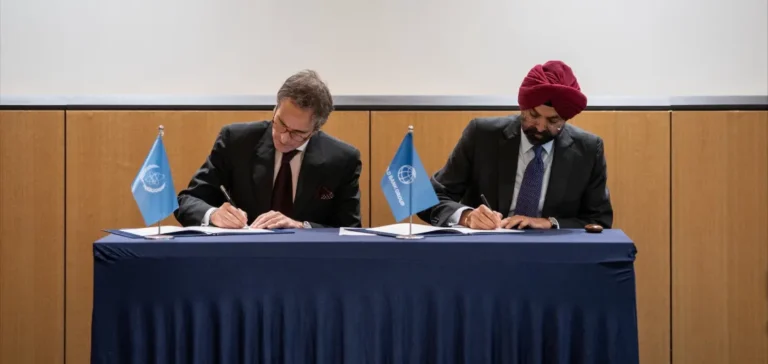The World Bank has announced a partnership with the International Atomic Energy Agency (IAEA), aimed at supporting countries wishing to incorporate nuclear energy into their national energy development strategies. This agreement comes shortly after the multilateral institution’s board officially approved the resumption of nuclear project financing, a decision made within a broader electrification strategy emphasizing accessibility, affordability, and reliability, while responsibly managing emissions.
Priority collaboration areas
The partnership between the World Bank and the IAEA covers three major areas of intervention. First, the initiative aims to strengthen the internal capacities of the World Bank in nuclear safety, non-proliferation, and technical regulation. Secondly, both institutions will focus on extending the operational life of existing reactors, considered an economically advantageous solution. Lastly, particular attention will be given to studying and potentially accelerating the deployment of small modular reactors (SMRs), seen as potentially suitable for a broader range of countries.
Ajay Banga, President of the World Bank, emphasized at the signing event in Paris that investment requirements in the electricity sector of developing countries are expected to rise significantly, increasing from the current USD280 billion annually to approximately USD630 billion per year by 2035. Banga highlighted that the institution cannot undertake this task alone, underscoring the strategic importance of the partnership established with the IAEA.
Major policy shift
This partnership signifies a major policy shift for the World Bank, which had previously financed only one nuclear project, in Italy in 1959, amounting to USD40 million. Since then, the institution had refrained from nuclear financing, primarily due to concerns related to the risks and high costs of such projects. The recent lifting of this exclusion results from a full year of extensive collaboration with the IAEA.
IAEA Director General Rafael Mariano Grossi stated that cooperation with the World Bank was essential to overcome persistent financial barriers hindering nuclear expansion in emerging economies. According to him, the World Bank’s involvement opens the door to new collaborations with other regional development banks, several financial institutions having already expressed interest in following this example.
International nuclear sector reactions
World Nuclear Association (WNA) Director General Sama Bilbao y León welcomed this policy shift by the World Bank, considering it crucial for widening access to nuclear financing globally. She noted that increased involvement of international financial institutions could accelerate global nuclear capacities and offer a new pathway for emerging countries interested in this technology.
Currently, 440 nuclear reactors are operational in 31 countries, with an additional 70 reactors under construction. The IAEA estimates that around 30 countries are seriously considering nuclear options, the majority of them in the developing world, for whom access to financing often remains challenging.






















